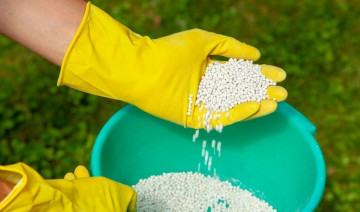
Lawn Projects for Spring
Spring can be a stressful season for any lawn, but there are simple projects you can do to prepare and protect your turf to withstand the rigors of spring. Which projects are best for your lawn will vary, but each one will help you nurture a lush, strong, healthy lawn.
The Stress on Spring Lawns
Spring is a very welcome season as gardens begin to grow, buds burst forth, and lawns green up thanks to longer days and milder temperatures. Despite its popularity, however, spring can actually be devastating to lawns with unpredictable switches between freezing and thawing, saturated soil thanks to snow melt coupled with spring rains, and encroaching weeds that take root before grass begins to grow. As wildlife becomes more active different guests may dig into a lawn, and insects can quickly infest a lawn that is weakened from winter weather. As we get out into our yards in early spring, foot traffic can crush new growth and cause debilitating soil compaction. Fortunately, all of these stresses can be overcome and you can easily take steps to have a spectacular spring lawn.
Best Lawn Projects for Spring
There are many options for how to best care for your lawn in spring. The exact projects that will benefit your turf most will depend on its overall condition and the local climate and weather, as well as whether the lawn is comprised of cool-season grasses (fescues, bluegrasses, ryegrasses) or warm-season grasses (St. Augustine, Bermuda, zoysiagrasses, carpetgrasses). In general, however, the following projects can all help rejuvenate any lawn after a long winter.
- Spreading Snow – If there are still piles of old snow on the lawn, they should be spread out to melt more quickly or new growth could smother and the lawn could develop fungus or mold.
- Raking – Gentle spring raking fluffs up matted clumps of grass and removes leftover leaves, twigs, and other debris that didn’t fully decay over the winter to help reduce thatch buildup.
- Dethatching – If needed, thorough dethatching can remove a too-thick layer of material that is stifling grass. This will allow more moisture and air to reach the turf’s roots.
- Aerating – Spring aeration will reduce compaction, allow thatch to decay more quickly, and bring air and moisture to the lawn’s roots with improved overall drainage.
- Weeding – Weeds need to be controlled in every season, and weeds that are pulled in spring can’t take over in summer. A pre-emergent weed killer can help control spring weeds.
- Soil Testing – Getting a thorough soil test will help guide further lawn treatments all year, including whether amendments ought to be added to improve pH and overall soil quality.
- Overseeding – If the lawn has bare patches or may be thin overall, overseeding in spring can thicken the turf to crowd out weeds and keep the lawn healthy and resilient.
- Fertilizing – A slow-release fertilizer can boost spring lawns, but should not be applied too early or it won’t be as effective for growing roots. Mid-spring applications are best.
- Watering – In areas where winter snow may have been less than expected or spring rains are inadequate, watering is essential to help boost a spring lawn and encourage fresh growth.
- Mowing – A spring lawn is ready to mow when the grass is a suitable height and the ground dries enough to support the activity. Don’t delay or grass will be stressed when cut too much.
- Controlling Pests – Fire ants, chinch bugs, and grubs can all overtake a spring lawn and should be properly controlled. Be sure insects are proper identified so they can be safely eradicated.
- Repairing Equipment – Spring is a great time to inspect and repair the mower, trimmer, edger, and other lawn equipment. Sharpen blades, change oil, tune up small engines, and do other tasks so the gear is ready to go as soon as the lawn has rejuvenated.
With just a few tasks, a spring lawn can go from a tired casualty of a rough winter to thriving turf ready to welcome outdoor activities. By preparing your lawn properly in spring, you’ll be able to enjoy healthier, more robust turf not just in spring, but through summer and into fall.
